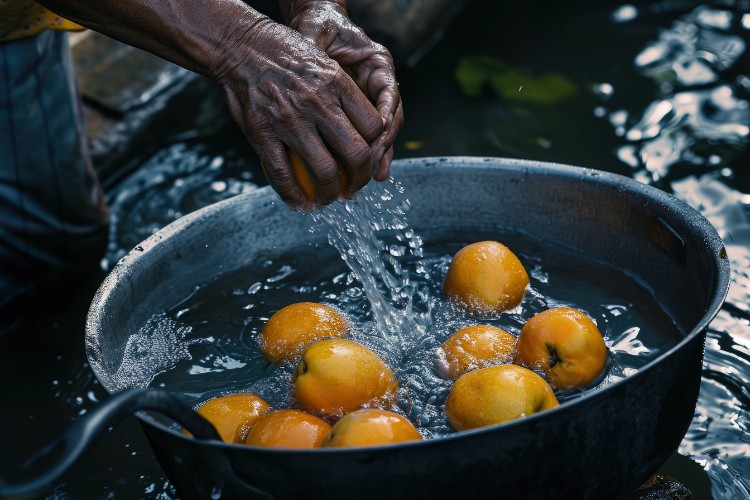How to Make 0.8 Sodium Hypochlorite Solution?

Introduction: Why We Make It Ourselves
We’re Shandong Shine, and trust us, we know hypochlorite. We’ve been building site sodium hypochlorite generators for years.
But today, we’re not just selling—we’re sharing. If you’ve ever wondered how to make 0.8 sodium hypochlorite solution, you’re in the right place.
We’ll break it down in simple steps. No jargon. No fluff. Just the real stuff.
Let’s dive in.
The Basics of Sodium Hypochlorite
What Is 0.8% Sodium Hypochlorite?
It’s a mild disinfectant with powerful punch. You’ll find it in water treatment, surface sanitation, and even fresh produce cleaning. It works fast, breaks down safely, and costs less to make onsite than buying in bulk.
Where Do We Use It?
· Hospital surfaces
· Livestock farms
· Vegetable and fruit washing
· Municipal treatment plants
It’s safe when handled right. It’s strong enough to kill pathogens but gentle enough not to corrode everything it touches.
What You Need Before Mixing
Start With the Essentials
Before we show you how to make 0.8 sodium hypochlorite solution, gather these items:
· Pure salt (NaCl), industrial or food-grade
· Softened water (low calcium, low magnesium)
· Reliable sodium hypochlorite generator
· Access to 220V or 380V power supply
· Storage tank made from PE or PP plastic
Choose the Right Generator
Let’s be honest. You can’t get stable 0.8% HOCl with a DIY bucket and spoon. You need a proper site generator that:
· Uses electrolysis
· Has flow sensors and concentration control
· Prevents leakage of chlorine gas
· Runs automatically once configured
We recommend our Shine On-site Hypochlorite Generation System—because we make them, test them, and trust them ourselves.
Step-by-Step: How to Make 0.8 Sodium Hypochlorite Solution
1. Prepare Your Brine
Mix pure salt with soft water.
Stir until fully dissolved.
No undissolved salt chunks allowed.
2. Start the Generator
Power on using 220V or 380V, depending on your system.
Check all valves and safety alarms before beginning.
Input water and brine start flowing.
3. Electrolysis Begins
The system generates sodium hypochlorite using direct current.
Electrodes split salt into HOCl, NaOH, and some chlorine gas (captured inside).
The output strength depends on:
· Current (A)
· Voltage (V)
· Brine flow (L/h)
· Temperature (°C)
We fine-tune these to ensure a steady 0.8%.
4. Collect and Store
Once ready, the generator pushes the 0.8% solution into a sealed PE tank.
Label everything. Don’t mix with acids or ammonia.
Always test with ORP meter or DPD test strips.
5. Apply As Needed
Dilute for surface sprays or use directly in dosing pumps.
Never leave tanks open to air—it breaks down fast in sunlight and heat.
Real-Life Twist: Why 0.8% Works Best
We’ve seen people aim for 1% or even higher. But here’s the thing:
· 0.8% works on most bacteria and viruses
· It’s safer for human contact
· Less corrosion risk
· Stays more stable over time
So while it might feel tempting to “go big,” trust us—0.8% is the sweet spot.
What Makes Our System Shine?
H3: Reliable Quality Control
We test every unit before shipping. Flow rate accuracy. Electrode integrity. System pressure. No corner-cutting.
H3: Smart Features
All Shine models include:
· Auto brine feed
· Alarm for leaks
· Real-time concentration display
· Wi-Fi monitoring (optional)
H3: Energy-Efficient Design
We’ve optimized electrolysis for max efficiency—less power, more hypochlorite.
Choose between 220V or 380V depending on site setup.
H3: Easy Maintenance
Electrode self-cleaning.
Modular parts.
Remote support available 24/7.
Safety Tips: Handle With Care
Even at 0.8%, hypochlorite demands respect.
· Always wear gloves and eye protection
· Keep away from acids (creates chlorine gas)
· Label storage clearly
· Test before use
· Avoid skin contact
Quick List: Parameters We Monitor
· NaCl Input: Mix pure salt with soft water
· Final Output: 0.8% ±0.1%
· Storage Temp: <25°C
· pH Range: 9–11
· ORP Reading: 650–900 mV
Common Mistakes to Avoid
· Using hard water (leads to scaling)
· Storing in metal tanks (causes corrosion)
· Guessing concentration without test kit
· Mixing with vinegar (dangerous gas risk)
· Running generator without flow check
We’ve made those mistakes before—so you don’t have to.
Why Choose Shine?
We didn’t just enter this market. We built it brick by brick.
Our sodium hypochlorite generator systems serve clients in 30+ countries.
We offer:
· Tech support
· Spare parts
· Custom design
· Training videos
· Real engineers on standby
We don’t just talk the talk—we wire the wires, bolt the bolts, and flip the switches ourselves.
Final Thoughts
You don’t need to be a chemist to make 0.8 sodium hypochlorite solution.
You just need the right tools, right team, and real knowledge.
Our Shine On-site Hypochlorite Generation System helps you stay clean, stay compliant, and save money.
We love what we do—and we want to help you love it too.
Got questions? Need a quote? Let’s talk!
FAQs: Everything You Want to Know
Q1: Is 0.8% enough to kill germs?
Yes, it's effective against most bacteria, viruses, and fungi.
Q2: Can I use tap water to make the brine?
Only if it's softened. Hard water damages the electrodes.
Q3: How long can I store the 0.8% solution?
Use it within 2 weeks for best strength.
Q4: Can I run it on solar power?
Yes, with battery backup and inverter.
Q5: Does it smell strong?
Only slightly. Less than bleach. You’ll notice it, but it won’t knock you over.
Q6: Can I scale up to 1,000 liters per hour?
Absolutely. We customize per site.
Q7: Is training included?
Always. We send manuals, videos, and online sessions.
References
1. WHO Guidelines on Drinking Water Quality
3. CDC Sodium Hypochlorite Fact Sheet
4. PubChem Sodium Hypochlorite
